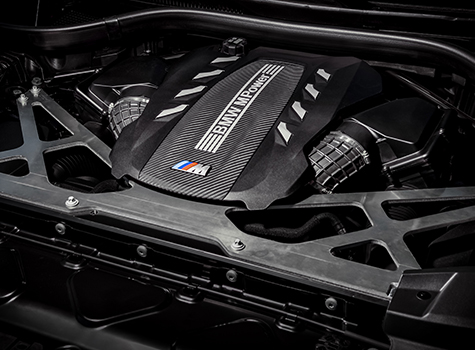BMW X6 Engine Check Engine Light: Causes and Solutions
BMW X6 Check Engine Light: Clear Causes & Easy Fixes
Dashboard warnings feel as worrying as the check‑engine light. The moment you are enjoying the smooth pull of BMW X6 Engines, and the next a small amber symbol appears, hinting that something under the bonnet needs attention. A BMW engine specialist deals with this light every day and knows that it often points to small issues if caught early. In this guide, we explain what the light means, why it comes on, and how you can respond with confidence. You will see how driving habits, basic checks, and timely expert help work together to keep your X6 running strong for many years.
Why the Check‑Engine Light Matters
Your X6 is full of sensors that watch air, fuel, heat, and exhaust gases hundreds of times each second. When any reading moves out of a safe range, the control unit stores a fault record and turns on the light. A steady light often marks a non-urgent problem, while a flashing light warns that unburned fuel may harm the exhaust system and that you should slow down and seek help at once. Driving for long with the light on can raise emissions, cut power, and turn a small repair into a large one.
How the Light Speaks to You
- Steady glow – the engine has noticed a reading outside the normal window, but still feels safe enough to keep going.
- Flash or rapid blink – misfires or overheating may damage the exhaust cleaner. Ease off the throttle, keep revs low, and plan a workshop visit without delay.
Understanding these two signals helps you choose the right speed and route to safety.
Everyday Causes of the Warning

The list below covers the problems met most often in service bays.
Loose or Worn Fuel Cap
A fuel tank must seal tightly to hold a small vacuum. If the cap is loose or its rubber ring is cracked, that seal fails. The engine tests the seal during normal driving, senses a leak, and lights the icon. A simple refit or new cap often clears the fault after a few journeys.
Ageing Oxygen Sensor
These thin probes sit in the exhaust and read how much oxygen remains in the gas flow. Over time, heat and moisture coat the tip and slow its reaction. When the sensor no longer gives quick and clear signals, the control unit cannot balance fuel and air, so it logs a fault. Replacing the sensor restores smooth running and cuts fuel waste.
Dirty Air‑Flow Sensor
The air‑flow sensor, set in the intake tube, measures how much air enters the engine. Oil mist or dust can coat the fine wire inside, and the reading drifts. A gentle clean with sensor-safe spray or, if needed, a fresh sensor, returns the figure to normal and lets the light turn off.
Spark Plug or Coil Trouble
Each cylinder uses a high-energy coil to fire its spark plug. Heat cycles and vibration can crack the coil housing or wear the plug tip. When a coil or plug fails, the cylinder misfires, the light appears, and the exhaust may smell of fuel. A new set of plugs and coils, if needed, brings back smooth power.
Air Leaks in Hoses
Turbo engines rely on tight hoses to carry pressurised air. A small split near a hose clamp can let air escape or sneak in, upsetting the mixture. The engine notices the mismatch and warns you. Replacing the damaged hose or seal quickly removes the fault and protects the turbo from overspeed.
Cooling System Sensors
If the engine runs colder or hotter than it should, a temperature sensor or thermostat may be stuck. A cold engine uses extra fuel; a hot one risks long-term wear. The control unit spots the strange temperature path and stores a code, lighting the icon. A fresh thermostat or sensor solves the issue.
Exhaust Cleaner (Catalytic Converter) Efficiency
The catalytic converter changes harmful gases into safer ones. Age, poison from short trips, or long-lasting misfires can lower its efficiency. The control unit compares data from sensors before and after the converter, and if the numbers show poor filtering, the light comes on. Solving upstream issues early often saves the converter and your wallet.
First Safe Steps When the Light Appears
Observe the dash and feel the car.
If the light is steady and the engine feels normal, you can drive calmly to a safe place. If it flashes or the engine shakes, slow down, avoid high revs, and plan a direct route to a garage.
Tighten the fuel cap
Pull over, open the flap, and turn the cap until you hear or feel a click. A poor seal is a common cause, and this quick action costs nothing.
Make a note of any new sounds or smells
A rough idle, whistling air leak, or smell of raw fuel narrows the list of suspects.
Scan for fault records if you own a reader
Even a basic plug-in reader can capture the stored fault and show a plain phrase such as “mixture too lean.” This gives you or your technician a head start.
Plan your repair
Some faults allow a few days’ driving without risk, but misfires or overheating need swift professional care. Talk to a trusted BMW Engines Specialist if you are unsure.
Simple Checks You Can Do at Home
- Look along the big black hoses from the air filter to the engine for splits, especially near clamps.
- Shine a torch at the top of each coil for cracks or white tracking marks.
- Peek under the car after parking; fresh drips may hint at coolant or oil leaks that affect sensor readings.
- Check coolant and oil levels; low fluids often match temperature or timing faults.
If the light comes back the moment you clear it, the fault is live and will need workshop tools.
When to Call a BMW Engine Specialist
Some faults hide behind the first code the reader sees. A loose hose can cause lean mixture, turbo boost deviation, and misfire records all at once. A BMW engine specialist uses brand software, smoke machines, and experience with pattern faults to see the link and fix the root cause in one visit, saving parts and time.
Preventive Tips to Keep the Light Off
- Follow the factory oil‑change interval, or shorten it if you mainly drive in slow traffic. Fresh oil cools and cleans sensors.
- Replace spark plugs on schedule; worn plugs strain coils and overheat the exhaust cleaner.
- Use a trusted fuel brand and, with every service, add a quality cleaner to keep injectors and valves free of gum.
- Check rubber breathers and turbo hoses for softness or oil sweat during each service visit.
- Let the engine idle for a short moment before switching‑off after a brisk drive; this protects the turbo from heat soak.
Small habits like these cost little and pay back in fewer warning lights and smoother running.
Clear Answers to Common Questions
Is it safe to drive with the light on if the car feels fine?
If the light is steady and no other signs appear, gentle driving for a short distance is usually safe, but arrange a check as soon as you can. If the light flashes or the engine shakes, reduce speed and find help straight away to prevent further harm.
Will disconnecting the battery reset the light?
It may clear the memory for a short time, but the control unit will test the same system again. If the fault is still there, the light will return.
Why does the light appear more often in winter?
Cold weather shrinks rubber seals and adds moisture to exhaust gas. These changes can tip marginal parts over the edge and turn the light on.
Does premium fuel help avoid the light?
Higher‑octane fuel burns cleaner, helps prevent knock, and keeps sensors happier for longer. It is a helpful habit, though not a cure for poor maintenance.
Final Thoughts
The check‑engine light is not a reason to panic; it is the engine’s way of asking for care. Listen early, take simple first steps, and lean on a seasoned BMW Engines Specialist for deeper checks. Acting quickly turns most warnings into small fixes, keeps emissions clean, and protects the lively performance that makes your BMW X6 special. With calm attention and regular service, you can look forward to many smooth and confident miles, free of unwanted amber lights.
READ MORE